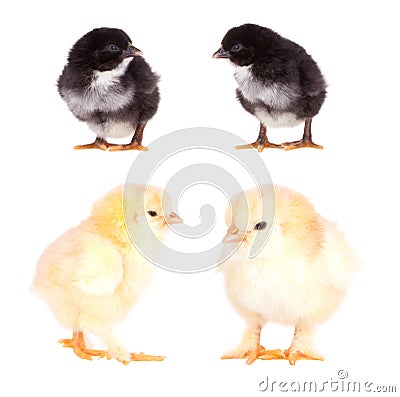For chicken to have and ideal environment, it will be combination of temperature, ventilation, housing, air composition and relative humidity. As regard temperature, the best environment for birds should have a temperature in the range 21-26 degree Celsius. The environment influences the performance of the bird and consequently has an effect on final result. The effects of temperature and ventilation on the bird's performance would be clearly seen if temperature range is not between 21-26 degree Celsius. This is because birds react differently when expose to temperatures above or below the thermo neutral zone. The thermo neutral zone is 21-26 degree centigrade. If your farm is in the tropics you must make sure of the following;
- The birds are well kept under a shady place at all times
- For the roofing of their housing, do not use iron sheet. If you would, make sure it is painted white and preferably close to where a tree can shadow it.
- Provide plenty of ventilation and use open-shaded shed with windbreaks. If possible, white wash all the structures outside.
- To reduce house temperature and humidity, maintain good water intake
- High rise house are cooler than deep litter houses. Houses should be open-sided with shady trees planted along the longer sides
- The roofing must be of asbestos sheet and not corrugulated iron sheet.
- Water tanks must be painted with white paint and well covered.
- Fans can be installed to assist in temperature cooling within the poultry house.
- Ice blocks inside water could help bring down the temperature of the water and consequently the temperature of the birds.
- Use of sprinklers and foggers will assist in bringing down the temperature of the poultry house.
- Use vitamin electrolyte rich in vitamin C, E and K.
Effect of high temperature
High temperatures are observed between January and March and also between November to December. During this period, temperature could range between 29 degree and 30 degree centigrade. This period is characterized by incidence of diseases such as Newcastle, fowl typhoid; gumboro etc. birds react to high temperature in the following ways:
- Increased respiration shown by panting and opening of mouth
- Increased in their hearth beat.
- Increase blood flow to skin, face, wattle and comb.
- Sharp drop in blood vitamin C level during hot period.
- Reduced fertility in breeders
- Increased susceptibility to disease due to drop in vitamin C level.
- Pecking will increase among the birds.
- Mortality rate will also increase if not controlled.
Heat equally has effect on the eating habit of the chicken. It is worthy of note to mention here that, "the amount of feed to be consumed by your birds is determined by the energy content of the feed". The higher the energy content, the lower is the feed to be consumed.
However when there is a rise in temperature, feed intake by your chicken will drop, it becomes reasonable therefore that a lower energy diet in a hot environment will allow your birds to consume more feed than a higher energy diet. However, in reducing or increasing energy diet, the appropriate level of protein and vitamins must be taking into consideration. As a fact the energy protein ration of the diet is to be your yard stick. The farmer must maintain the energy protein of the feed between 150 and 155 in hot periods for laying birds.
Heat effect does not stop at the eating habit of the birds. It also has an effect on the production. The following are the effect of heat on production. - Reduced feed intake
- Increased feed conversion ratio
- Reduced growth size
- Reduced egg size
- Reduced egg production and finally
- Thin shell increases.

Saturn Sky Turbocharger
ReplyDeleteits nice to read a useful article for beginner like me. Some of points from this article are very helpful for me as I haven’t considered them yet. I would like to say thank you for sharing this cool article. Bookmarked and sharing for friends.